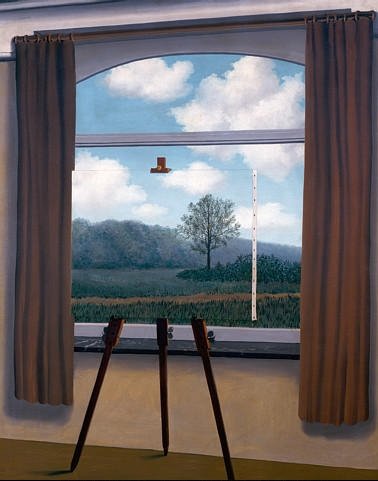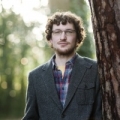You have no items in your cart. Want to get some nice things?
Go shopping
Let us be frank. No place we ever read about, be it the grandest mansion, the humblest hovel, the village shuttered up for sleep, the city bristling alive all night, the jungle filled with steam and chirruping insects, the mountain making us feel impossibly small, none of them exists entirely. We make them up as we read of them. We prank ourselves.
Sometimes we know it’s a lie as soon as we read it. That’s when we hear about fairy-tale forests, or make-believe shires, or spaceports floating in alien atmospheres. Those times, we let our guard down while we’re reading, pretending to believe until the last page turns and the covers close. Then we marvel at the fanciful sights we have seen as we return to our granite world of supermarket visits, dirty dishes and more laundry than it ever seems possible to be rid of.
Other times we flirt with belief. That’s when we read of times long past, of grand palaces and forgotten fashions, horse-drawn carts clattering down cobbled roads, tall ships cresting the waves of bright blue oceans. Although we know these things have faded into history, we have faith in what we read about them. Yes, we tell ourselves, I believe that it was like that all those years ago. It is easy to muddle the permanence of a tangible location with the images of such a place that we build up when we read. Sometimes we can still visit the place, stand on the milestones of history and imagine their stories passing by. Then it’s all too tempting to think that the brick and mortar, the rock and dirt we’re surrounded by, is somehow related to the words we once saw on a page.
Good literature gets into the parts of our minds where our perceptions are formed. Things we read about take on qualities as “real” as things we’ve actually seen. It can happen with both characters and landscapes, but it’s easier to compartmentalise a character. We know that people come and go, but that’s not how we think of places. They take demolition, long erosion or catastrophe to wipe away.
Most crafty of all are the stories set in the present day, in places so familiar that we might have even lived there. These can dupe us hook, line and sinker. The more their accounts tally with our own lived experience, the more it seems that the places we read about and the places that we’ve been are one and the same. The words can feel like souvenirs, like clods of soil dug out of the earth we’ve walked on. We say things like, “That’s just what it’s like when you’re there,” or, “They really captured that in words.”
Truth is, it’s the words that capture us. They may have absolutely nothing to do with the actual atoms of a place, but such is their genius that twenty-six Latin symbols and a handful of dots and dashes, clustered into bundles long and short, can transport us anywhere. Language is a boat or a jet plane. It can make us believe that looking at lines of ink on a page can somehow be equivalent to staring into the depths of the ocean or gazing out across a mountain range. So when we visit a place for the first time, having read something striking about it, it’s hard to remember that we have never actually been there. Our minds are always ready to muddle fictitious experience with the blunt reality of where our bodies have been.
Perhaps there is a danger in this, and we should be wary of literature’s wiles. Perhaps it is something to celebrate, one of humanity’s most liberating inventions. Perhaps it’s a bit of both. Because I’m not sure either way of perceiving a place is any less “real” than the other.
“This is how we see the world,” said the painter René Magritte (see picture above). “We see it as being outside ourselves even though it is only a mental representation of what we experience on the inside.” Language knows this. In that part of our brain where we make a picture out of the things we hold to be true, it adds its own graffiti. This new column for Litro represents an effort to both applaud and warn against its work. I’m going to follow language around the world, observing its behaviour on its migrations. I’m going to play the willing victim and let it lead me wherever it might wish, keeping a weather eye open along the way. I’m going to watch my footsteps carefully, and test the links between the landscapes of language and the hard geology I can feel beneath my feet.
My itinerary will be straightforward. With each instalment of this column, I’ll focus on a different location, be it a specific mountain, sea, or city, or a wider-ranging terrain (the tundra, the coral reef, the temperate forest). I’ll look at as broad a selection of writers as I can find, to get to grips with how each has summoned a particular landscape before their readers’ eyes. I can make no claims that the results will be exhaustive; I’m only eager for them to be interesting.
To that end, get your suitcases packed. As I write this, the snow is falling past my window and the day is the coldest yet in a freezing week. My first stop, then, will be the region surrounding the North and South Poles.
What may not be expected in a country of eternal light? I may there discover the wondrous power which attracts the needle; and may regulate a thousand celestial observations… and may tread a land never before imprinted by the foot of man.
— Mary Shelley, Frankenstein
I hope that those of you reading this may be able to help with directions. Have you come across any great ways in which writers have described the Pole — either its Arctic surroundings or its southern twin? Anything from a favourite novelist or poet, or from a travel writer or biographer? Nonfiction is better at closing in on the solid facts of what a place is, although thanks to that tricky devil, language, even such accounts are likely to be removed from the tangible elements of the place itself.
Let me know your suggestions by commenting on this post or dropping me an email. I’ll use everything I can, adding it to the passages I find, and I’ll see you at the extremes ends of our world in a few weeks’ time.

About Ali Shaw
Ali Shaw is the author of the novels The Man who Rained and The Girl with Glass Feet, which won the Desmond Elliot Prize and was shortlisted for the Costa First Book Award. He is currently at work on his third novel.





Further to last RT: @Ali_Shaw’s article is awesome, and also requires audience participation for his next installment: https://t.co/SSaPMTdn
I’ve started a new column for Litro Magazine about the way we see the worlds we read of. And I could use your help… https://t.co/mBYG6EVq
I recently read ‘Empire Antarctic’ by Gavin Young — it’s not the North Pole but beautiful writing and perfectly captures the isolated and dark polar winter.
Ali, this is lovely! I’m very much looking forward to your next column!
As for suggestions, the two that come immediately to mind are Jack London’s Call of the Wild and White Fang, set in the extreme conditions of the Yukon. Not sure if they’re what you’re necessarily looking for geographically, but they were my very first favourite “adult” books, and for that reason, have lodged themselves so firmly in my head that they come to mind whenever I think about wintry, inhospitable climates.
I haven’t read them in a while, however, so there is a possibility that my mind may be playing tricks on me, in the sense that I’ve perhaps remembered them for something they may not represent (which goes back to the points you make in this first column!) — and as such, they perhaps may not be as useful for you as I hope.
Also, I haven’t read this yet — but Adam Gopnik’s meditation on Winter sounds like it could be interesting and might throw up some interesting observations and histories.
Novelist @Ali_Shaw needs reading suggestions on Arctic & Antarctic regions for his column exploring landscapes in lit! https://t.co/4U48BbZ4
Thanks Emily and Sarah, I’ll check these books out.
Geographical tangents will be just as welcome as books that focus entirely on the place in question. Association plays such a large part in the way we read about landscapes, so any books or passages that evoke vast wintry climes should prove perfectly apt.